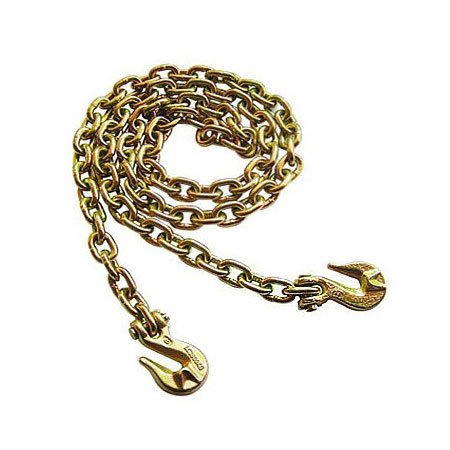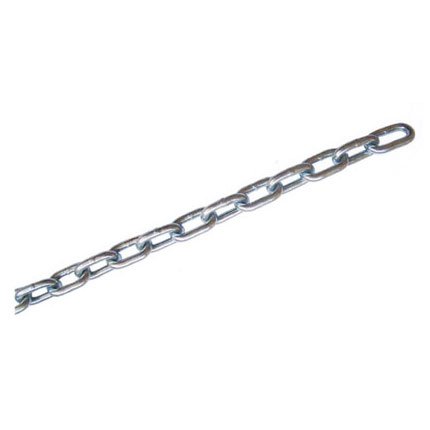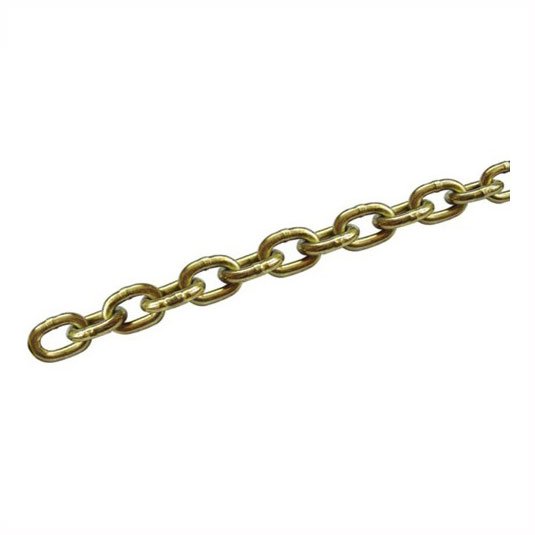Korean Standard Link Chain
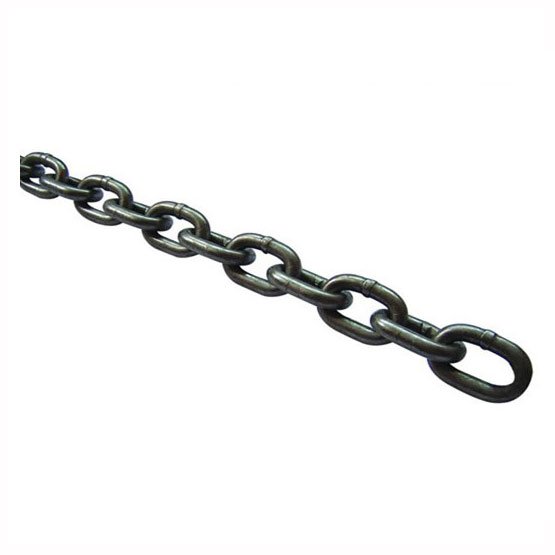
PRODUCT OVERVIEW
The Korean standard link chain is a vital component known for its quality, reliability, and versatility in various industries.
Whether you’re involved in construction, manufacturing, or general heavy-duty applications, having a high-quality chain that adheres to Korean standards is essential.
Specification
|
NOMINAL SIZE mm |
MATERIAL SIZE mm | INSIDE LENGTH mm | INSIDE WIDTH mm | LENGTH PER PC mm |
WEIGHT PER PC kg |
|
|
S H O R T L I N K |
3 | 3.0 | 23.0 | 5.3 | 30 | 4.50 |
| 4 | 4.0 | 22.0 | 7.5 | 30 | 9.00 | |
| 5 | 4.8 | 23.7 | 8.3 | 30 | 12.74 | |
| 6 | 5.8 | 27.3 | 10.0 | 30 | 18.86 | |
| 7 | 7.0 | 31.0 | 12.0 | 15 | 14.14 | |
| 8 | 7.8 | 35.0 | 13.7 | 15 | 17.23 | |
| 9 | 8.8 | 39.0 | 15.2 | 15 | 22.13 | |
| 12 | 12.0 | 38.0 | 18.0 | 15 | 45.00 | |
| 15 | 15.0 | 45.0 | 23.0 | 15 | 75.45 | |
| 16 | 16.0 | 53.0 | 23.0 | 15 | 76.41 | |
| 19 | 19.0 | 58.0 | 25.0 | 10 | 78.28 | |
|
L O N G L I N K |
4 | 3.9 | 34.3 | 6.2 | 30 | 7.26 |
| 4.5 | 4.5 | 44.4 | 9.2 | 30 | 9.46 | |
| 5 | 4.8 | 45.0 | 11.0 | 30 | 11.31 | |
| 6 | 6.0 | 47.0 | 12.0 | 30 | 18.00 | |
| 7 | 6.8 | 50.0 | 11.4 | 15 | 11.19 | |
| 12 | 12.0 | 50.0 | 18.0 | 15 | 42.00 | |
| 15 | 14.8 | 64.0 | 23.0 | 15 | 61.44 | |
| 19 | 19.0 | 75.0 | 25 0 | 10 | 71.00 | |

Korean standard link chain Applications
Korean Standard link chains find widespread use in various industries and applications, including:
Construction and Rigging: These chains are commonly used in construction and rigging applications, such as lifting and securing heavy loads, scaffolding, and temporary structures. Their strength and durability make them ideal for demanding construction projects.
Manufacturing and Industrial Use: Korean Standard link chains play a crucial role in manufacturing processes and general industrial applications. They are utilized for tasks such as conveyor systems, machinery, and equipment rigging, ensuring efficient and reliable operation.
Transportation and Logistics: These chains are essential in transportation and logistics, particularly for securing cargo, loading and unloading operations, and trailer or truck tie-downs. They provide the necessary strength and reliability to ensure safe transportation of goods.
Mining and Heavy Industries: Korean Standard link chains are widely employed in mining operations and heavy industries where they are subjected to extreme conditions. These chains can withstand the rigorous demands of mining equipment, material handling, and other heavy-duty applications.
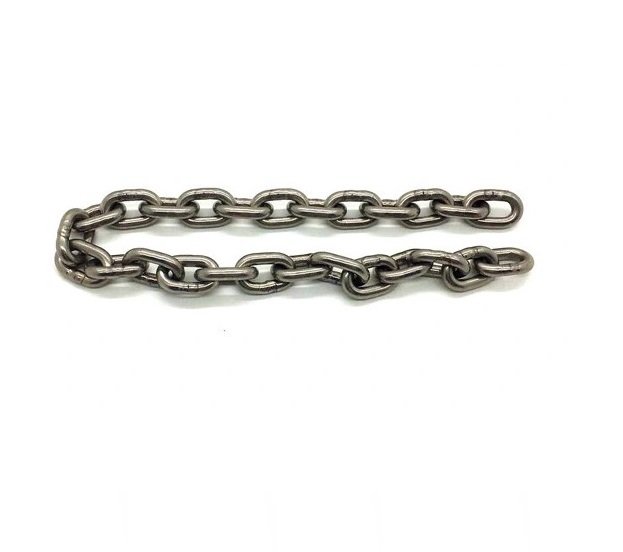
Korean standard link chain Features
Korean Standard link chains are manufactured to meet the stringent quality standards set by the Korean government. These chains are built to withstand heavy loads and provide optimal performance in demanding environments.
Superior Strength
Corrosion Resistance
Precise Dimensions
Consistent Quality
Versatile Applications
Easy Maintenance

Choosing the Right Korean standard link chain
When selecting a Korean Standard link chain for your specific application, consider the following factors:
Working Load Limit (WLL): Determine the maximum load the chain will be subjected to during operations and select a chain with an appropriate Working Load Limit that exceeds your requirements.
Chain Size and Configuration: Consider the chain size and configuration that best suits your application. Factors such as link diameter, link length, and chain design should align with the demands of your specific task.
Material Selection: Choose the appropriate material for your chain based on the environmental conditions it will be exposed to. Steel or alloy steel chains are common options known for their strength and durability.
Certification and Compliance: Ensure that the chosen Korean Standard link chain has the necessary certifications and compliance with relevant standards. This ensures its quality, safety, and suitability for your intended use.
LET'S GET IN TOUCH
FAQ - Japanese Fishing Link Chain
A Korean standard link chain is a type of chain that is manufactured in accordance with the regulations and standards set by Korean industry bodies. It is designed to meet specific performance and quality requirements, making it a reliable choice for various applications.
Korean standard link chains are widely used in industries such as construction, mining, transportation, marine, agriculture, and general-purpose applications. They are commonly employed for lifting, towing, securing, anchoring, and other tasks that require a strong and durable chain.
Some of the benefits of using a Korean standard link chain include superior strength, corrosion resistance, precise dimensions, consistent quality, versatility, easy maintenance, compliance with industry standards, availability in various sizes, and cost-effectiveness.
Korean standard link chains are widely used in industries such as construction, mining, transportation, marine, agriculture, and general-purpose applications. They are commonly employed for lifting, towing, securing, anchoring, and other tasks that require a strong and durable chain.
Maintaining a Korean standard link chain involves regular cleaning, lubrication, and inspection. Clean the chain to remove dirt and debris, apply suitable lubricants to reduce friction and prevent wear, and inspect it for any signs of damage or excessive wear. Follow the manufacturer’s instructions for maintenance procedures.



